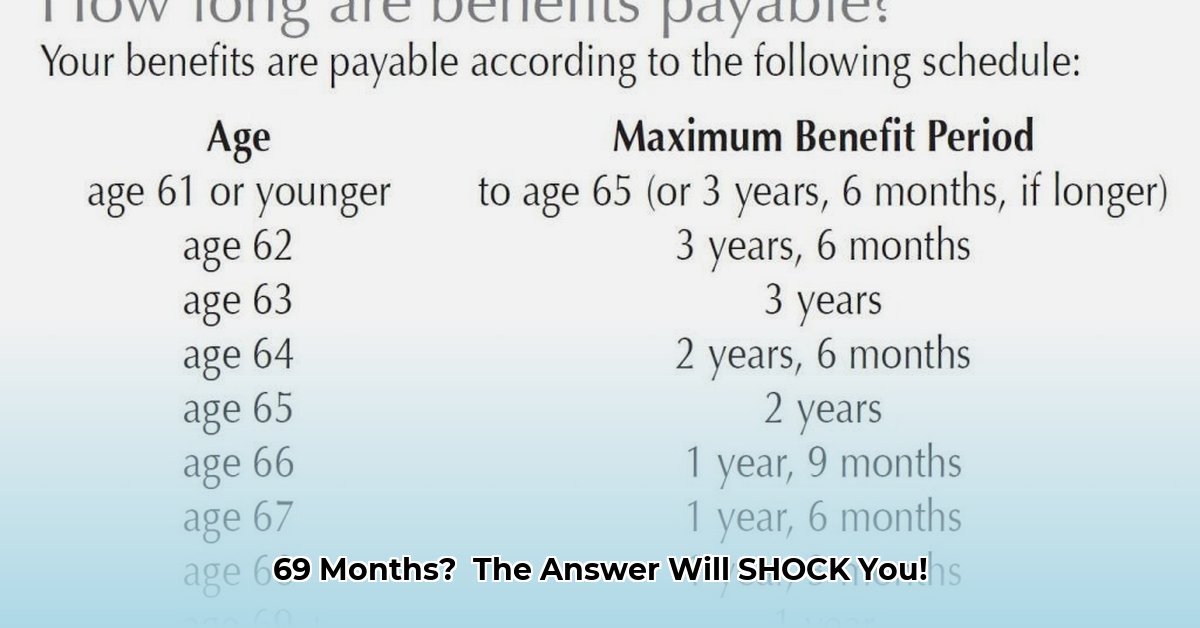
Understanding time conversions is crucial across various fields, from personal finance to project management. This comprehensive guide provides a step-by-step approach to converting 69 months into years, exploring different representations and highlighting potential pitfalls. Whether you're a seasoned professional or simply curious, this guide will equip you with the knowledge to confidently navigate time conversions. For more on converting time units, see this helpful guide on hourly to monthly pay.
Understanding the Basics: Months to Years
The fundamental principle behind converting months to years lies in recognizing that a year typically contains 12 months. This simple fact forms the basis of all calculations involved in this conversion. However, the precision required and the context of the conversion influence the best method for the task.
Step-by-Step Conversion: 69 Months to Years
To convert 69 months into years, follow these straightforward steps:
Divide by 12: Begin by dividing the total number of months (69) by the number of months in a year (12). This yields 69 ÷ 12 = 5.75 years.
Interpret the Whole Number: The whole number part (5) represents the complete years. In this case, we have 5 full years.
Calculate the Remaining Months: The decimal part (0.75) indicates the fraction of a year remaining. To convert this into months, multiply the decimal by 12: 0.75 x 12 = 9 months.
Combine the Results: Therefore, 69 months is equivalent to 5 years and 9 months.
Different Representations of 69 Months
The result can be expressed in several ways, each serving different purposes:
Decimal Representation (5.75 years): This format is ideal for calculations requiring precise mathematical operations, such as those used in many financial models. Its convenient for spreadsheets and software applications.
Mixed Number Representation (5 years and 9 months): This format excels in clarity and ease of understanding. It gives a clear picture of the duration and is easily understood in everyday conversation.
Fractional Representation (5 ¾ years): This representation offers a high level of mathematical precision, particularly useful in situations demanding very accurate calculations.
Real-World Applications: Where It Matters
The ability to convert 69 months to years accurately has real-world applications in many areas:
Finance: Calculating loan repayments, investment returns, and predicting compound interest all hinge on accurate time conversions. Projecting long-term savings or retirement also crucially relies upon understanding these conversions. For example, planning for a 69-month mortgage requires understanding the equivalent period in years to effectively budget repayment.
Project Management: Accurate time estimations and scheduling are vital for the success of any project. Converting months to years helps in visualizing timelines, setting milestones, and tracking progress effectively.
Data Analysis: In fields such as economics, the transformation of monthly data to a yearly representation simplifies analysis, comparison, and trend identification.
Potential Pitfalls: Common Mistakes to Avoid
While the conversion is straightforward, potential accuracy issues can arise:
Rounding Errors: Rounding 5.75 years to 6 years introduces error. Maintain the necessary precision for the context of your calculation.
Leap Years: Leap years (occurring every four years, with some exceptions) add an extra day to the year. In very long-term projections, the effect of leap years might become relevant, though is often negligible in most scenarios.
Contextual Appropriateness: Choosing the correct representation (decimal, fraction, or mixed number) depends on the specific application. Using an inappropriate format can lead to errors or misinterpretations.
Choosing the Right Method: Context is Key
The most suitable method for converting 69 months to years depends entirely on the situation. For everyday use, “5 years and 9 months” is sufficient. However, complex financial modeling, scientific research, or precise project planning might require the decimal or fractional formats for greater accuracy.
Conclusion: Mastering Time Conversions
Successfully converting 69 months to years involves understanding the fundamental relationship between months and years. Different representations of the result – decimal, mixed number, and fraction – cater to diverse needs. By understanding this seemingly simple conversion, one gains a deeper appreciation for the management and interpretation of time across various professional and personal contexts. Remember to select the appropriate conversion method and avoid common pitfalls for accuracy in your calculations.